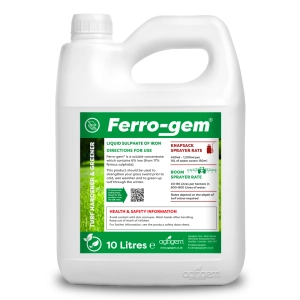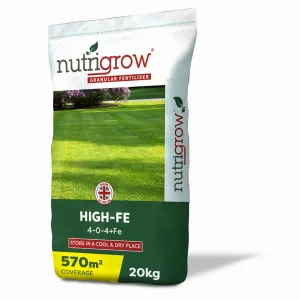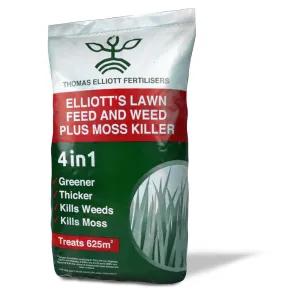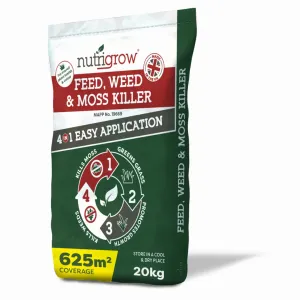Moss in your lawn? You’re not alone.
Moss is an incredibly common lawn problem made worse by damp conditions and weak or patchy grass. With the heavy rainfall we’ve experienced so far this year, it’s no wonder many of us are despairing at the rate of moss growth in our gardens and seeking the best moss killer we can get.
While moss may be magical for some, for most of us, if it’s in our lawn, it’s in the wrong place. Read on to learn more about this spongy garden guest, understand why it’s taken up residence, and how to eradicate it.
Where does moss come from?
Moss is a highly successful seedless plant, found in every corner of the world. In fact, moss evolved long before flowering plants and has successfully adapted to conditions where other plants fail to grow.
But the features that make moss so successful are also those that make it troublesome: it is easily established - in lawns and on hard surfaces - quick to spread, and hard to kill.
Did you know? Moss can photosynthesis at temperatures as low as -15°C and as high a 40°C and can survive in even more extreme temperatures by becoming temporarily ‘dormant’.
Moss attaches to your lawn using shallow ‘rhizoids’ rather than true roots and can reestablish itself when disturbed. And that spongy feel? That’s due to the way it absorbs water, by soaking up rainfall via its leaves and keeping the soil below it moist.
Why has my lawn got moss?
The most likely reason you have moss in your lawn is damp or waterlogging. This might be due to excessive rainfall, poor drainage, or shady areas.
But if damp isn’t an obvious issue, there are other reasons why moss might have made an appearance in your lawn. These include patchy or sparse grass, mowing too low (which can weaken the grass allowing moss to establish itself), compacted soil (and a lack of drainage and aeration), acidic soil, and the presence of thatch or old plant stems in the grass.
If any of these are present in your lawn, addressing the problem as well as killing the moss will help prevent it from establishing itself again in the future.
Moss will compete with the grass for light, and its dense carpet restricts airflow preventing grass growth and encouraging disease. For a healthy lawn, it’s always best to remove moss.
How do I kill moss in my lawn?
Finding the right moss killer for lawns starts with searching for products rich in iron. Iron is a great moss killer for lawns because it lowers the pH of soil to the point where moss is unable to grow and draws out the moisture so mosses dry, turn black, and die. It also feeds the grass to encourage healthy green growth.
It’s important to ensure you select a product with the right balance of iron and other nutrients that support plant health during spring and autumn. A fertiliser containing iron such as MossTop or Feed, Weed and Moss Killer will kill the moss and fertilise the grass to promote healthy growth – especially when applied in early spring.
Other products like Ferro-Gem Liquid Iron and High-Fe help strengthen and green the grass and are great for use on larger areas.
Not sure which product is right for your lawn? Visit our Technical Advice pages for expert guidance.
When applied to your lawn as directed, the moss will turn black and die within hours, leaving you the rewarding task of raking the dead moss away. Take care when raking not to damage the grass as this can create further bare patches that could leave your lawn susceptible to weeds.
Any bare patches that do remain after raking can be treated with topsoil and grass seed for a beautiful summer lawn.
Remember to mow your lawn at the right height to help your grass maintain its strength. Professionals advise mowing your lawn as high as you can – in fact the rule of thumb is never to cut more than 1/3rd of the grass blade.
When should I treat the lawn to kill moss?
April is the perfect month to treat your lawn and destroy moss because this is the month when moss releases spores to help it reproduce. Leaving it where it is could make removal tougher in later months.
If you’ve missed the early spring window, wait until autumn to treat moss and other weeds. Using a good moss killer in spring and autumn should be enough to prevent moss from growing in your lawn.
Discover just how amazing your garden can be with Agrigem. For a more detailed guide to moss and weed removal, see our How To Guide ‘How to remove moss and weeds from your lawn.’ Check out our complete range of moss and weed killers online.








